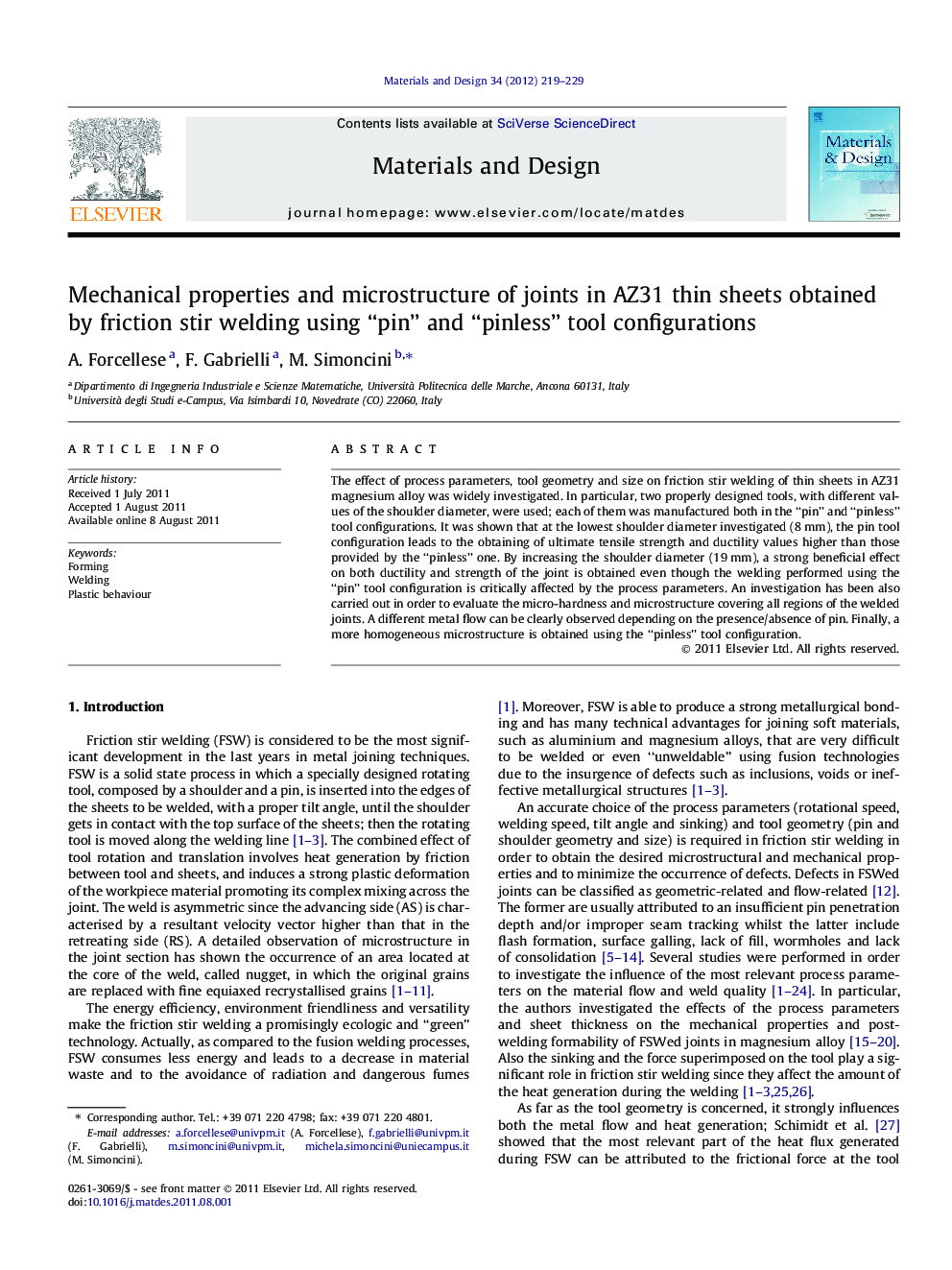| Article ID | Journal | Published Year | Pages | File Type |
|---|---|---|---|---|
| 831032 | Materials & Design (1980-2015) | 2012 | 11 Pages |
The effect of process parameters, tool geometry and size on friction stir welding of thin sheets in AZ31 magnesium alloy was widely investigated. In particular, two properly designed tools, with different values of the shoulder diameter, were used; each of them was manufactured both in the “pin” and “pinless” tool configurations. It was shown that at the lowest shoulder diameter investigated (8 mm), the pin tool configuration leads to the obtaining of ultimate tensile strength and ductility values higher than those provided by the “pinless” one. By increasing the shoulder diameter (19 mm), a strong beneficial effect on both ductility and strength of the joint is obtained even though the welding performed using the “pin” tool configuration is critically affected by the process parameters. An investigation has been also carried out in order to evaluate the micro-hardness and microstructure covering all regions of the welded joints. A different metal flow can be clearly observed depending on the presence/absence of pin. Finally, a more homogeneous microstructure is obtained using the “pinless” tool configuration.
► Process parameters and tool geometry effect on FSWed thin AZ31 sheets was studied. ► Different tools were used, both in the “pin” and “pinless” configurations. ► Both UTS and ductility increase with ω/v until a peak value, and then decrease. ► The highest UTS and ductility values were obtained using the “pinless” tools. ► Homogeneous microstructures were obtained using the pinless tool configurations.
